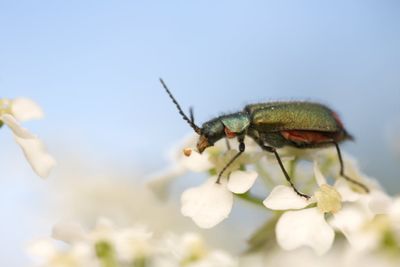Pests Of Caraway
There are both annual and biennial varieties of caraway plant. These Eurasian natives are primarily grown for their edible and aromatic seeds. They are fairly easy to grow in the right climate, but occasional pest and disease issues may arise. The primary pests of caraway are weeds, but some insects may become problematic. Caraway insect problems are generally easy to resolve once you know which culprit to target. There are both crawling and flying pests of caraway. The flying variety are most prevalent. These include leafhoppers and grasshoppers. Leafhoppers can be especially damaging bugs that eat caraway. This is because during feeding the insects can transmit aster yellows, a very damaging crop disease. Various types of beetles may feed on caraway plants in the garden. Certain weevils and other grain type pests can infest caraway when stored. It is important to thoroughly clean the storage bins in large scale harvest situations. Remove all the chaff from the seed, as this can harbor tiny instar cycle pests. Caraway has a volatile seed oil, so seeds need to be cured well before storage. This is done by natural air drying to preserve flavor and the intensity of the oil. Check seeds frequently to ensure insects have not hatched during the curing process. Before storing, go over the seeds again to prevent any insect parts or live insects from infesting the stored seed. Unfortunately, because caraway is a food crop, there are few registered pesticides for use with the plants. Avoid using broad spectrum insecticides in the garden which will reduce beneficial insect populations. Some of the enemies of leafhoppers are lacewings, pirate bugs, and lady beetles.
Natural Caraway Pest Control
Since the plant attracts some predatory insects, it can be beneficial to install near certain crops. When planted near Brassicas, for instance, the natural caraway pest control minimizes the presence of caterpillars. Adjacent to plants that suffer from aphid infestations, such as peas and beans, it also has natural repellent properties. However, it does not make a good companion near fennel or dill. The plant’s natural repellent properties are most evident in biennial plants in their second year when it is blooming. During this time, it attracts numerous types of parasitic wasps and flies which will eat larvae and smaller insects.
